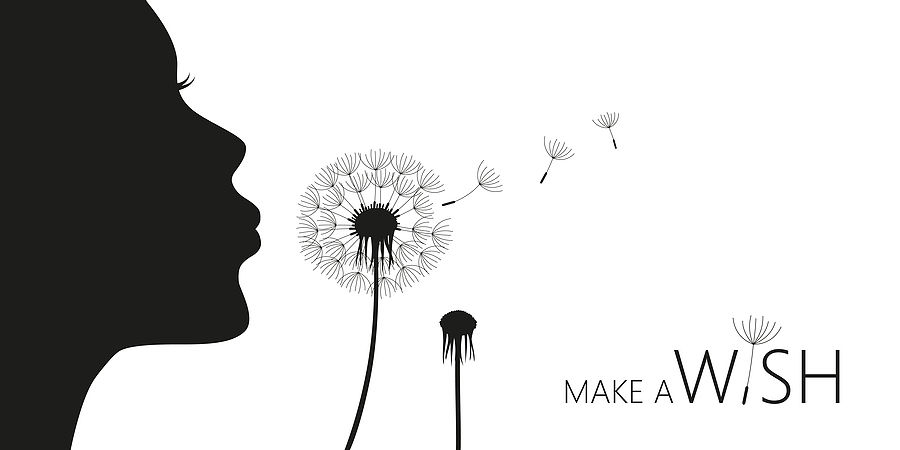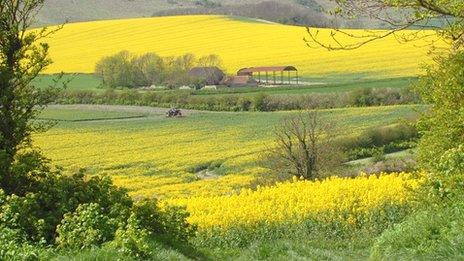In The Eyes Of The Beholder; Dandelions!
- Maddi Zimmerman

- May 26, 2021
- 4 min read

If you are living in Germany for the first time during the spring, you may be wondering why your landlord has not taken care of those pesky dandelions in the yard. Although they don’t take any special care to protect them when they mow the grass, don’t assume that telling your landlord the yard is overrun with dandelions is going to prompt mowing! Many people in Germany do NOT consider them weeds! They are flowers! Not only do they enjoy seeing them as flowers, but in many parts of the world, they are ingested for the health benefits.
And since Germany takes pride in NOT tainting their water with chemicals (so for the same reason you can't wash your own car in your driveway, you cannot purchase a chemical weed killer), dandelions have a much better chance of thriving in Germany than at your stateside home:)
That whole perception of a beautiful weed-free lawn is more of an American thing. We pull them, mow them, and treat them with chemicals. We might not be nearly as conscientious about the other “all green” weeds that do a better of job of blending in with the grass, but there’s no way we are going to let our beautiful GREEN lawn be splattered with the bright yellow flowers known as dandelions! So, does the first spring in Germany make you start changing your mind about them? Or does it make you miss your well-manicured American lawn?
Personally, I think the plant itself (the green part) is way more offensive than the yellow flower part. While I don’t like either of them in my stateside yard, the greenery to which the flower is attached is uglier than most weeds!
THE DANDELION'S FALL FROM GRACE
This once-prized plant, which gardeners used to exhibit at county fairs, now holds the title of Public Lawn Enemy No. 1, inciting levels of disgust on par with those directed at vermin, politicians and people who remove their shoes and socks on airplanes.
It’s a reputation, driven by ill-informed public opinion that scientists say is undeserved and ultimately harmful to the planet.
___________________________________________
ORIGIN OF THE SPECIES

We’ll get to the planet in a minute, but first, a bit of botanical background.
The dandelion, technically Taraxacum officinale, is a member of the sprawling Asteraceae family of plants, which encompasses 24,000 to 30,000 species distributed on every continent except Antartica, according to Michael Dillon, curator emeritus of botany at the Field Museum.
Its relatives include chrysanthemums, dahlias, marigolds, zinnias, coneflowers and daisies; once the family connection is made, the similarities are unmistakable. Though the resemblance is less obvious, lettuce and artichokes are also distant cousins of the dandelion.
For centuries, this now-derided plant was treated with the same respect as its widely admired kin, valued as a source of food (and wine), for its medicinal properties and yes, even for its beauty.
The plant we now attack with herbicidal vengeance was once so highly regarded, early European colonists took great pains to transport it from the Old World to the New.
Without a written record, there’s actually no way of knowing the dandelion’s precise origin story in the U.S., but current thought traces its arrival back to the 1600s, Dillon said, when some of the nation’s first European settlers planted it in gardens for use as food and medicine.
The obsession with lawns dates back to the days when most people were actively involved in agriculture, growing their own food. Lawns were a symbol of wealth, a way to signal that a person could afford to maintain unproductive land.
“They are called ‘weeds’ because they are ‘misplaced plants,’ but if we could rewire a person’s psyche to view them as beautiful, we would be seeing cultural evolution,”
Playing up the dandelion’s importance to pollinators, and by extension the food chain, could be the ticket to the dandelion’s comeback
Source: news.wttw.com
___________________________________________
THE HEALTH BENEFITS!

Let’s talk about some of the “proclaimed” health benefits of ingesting dandelion roots; and there are even more rumored benefits from the dandelion flower! If enough people discovered these benefits are backed by science and would help spread the word of their personal experience in these areas, THAT could change how dandelions are perceived in other parts of the world.
1. Providing antioxidants
2. Reducing cholesterol
3. Regulating blood sugar
4. Reducing inflammation
5. Lowering blood pressure
6. Aiding weight loss
7. Reducing risk of cancer
8. Boosting immune system
9. Aiding digestion
10. Keeping skin healthy
NOTE: Dandelion leaves are sometimes present in salads, but they are not widely available in all areas. Picking dandelions in a backyard is unsafe due to the potential presence of pesticides or animal excrement.
However, it is possible to obtain dandelion supplements or teas and coffees infused with dandelion root. Be aware that dandelion supplements can cause allergic reactions in some people.
You can find the details that justify all of these "root" benefits at MedicalNewsToday)
___________________________________________
And here, at LawnStarter.com, you can discover the many health benefits from the dandelion flower, AND see how dandelions actually benefit your lawn!
Now that you know the benefits of ingesting Dandelions, here’s a great source for how to include them in your diet! I don’t see myself ever ingesting them, but if it were proven to grow thicker tresses, reduce fat, or reverse the signs of aging, I’d definitely give it a go!!
I doubt any of this will change anyone’s opinion about how we perceive dandelions disturbing the appearance of our lawns in the U.S. or during our stay in Germany, but at least we might give our German landlords a little more slack when they don’t get them mowed, pulled or killed as quickly as we would:)
I guess my question would be if Dandelions have so many health benefits, why aren’t people growing Dandelion gardens, giving them a specific area to flourish and dissuading them from overpowering our lawns?
Since I'm not likely to ever reap the benefits of ingesting dandelions, their finest feature (for me) is my early childhood memories of their magical wish-granting power!

___________________________________________

BTW, if you are driving through Bavaria at this time of the year, you will see gorgeous fields of gold. I’m not sure why, but I thought those were mustard crops. Seriously, when the sun shines on them, it looks like those farmers are growing SUNSHINE!!! But it isn’t sunshine or mustard:) It’s Rapeseed, which is primarily used in the production of cooking oils.

Comentarii